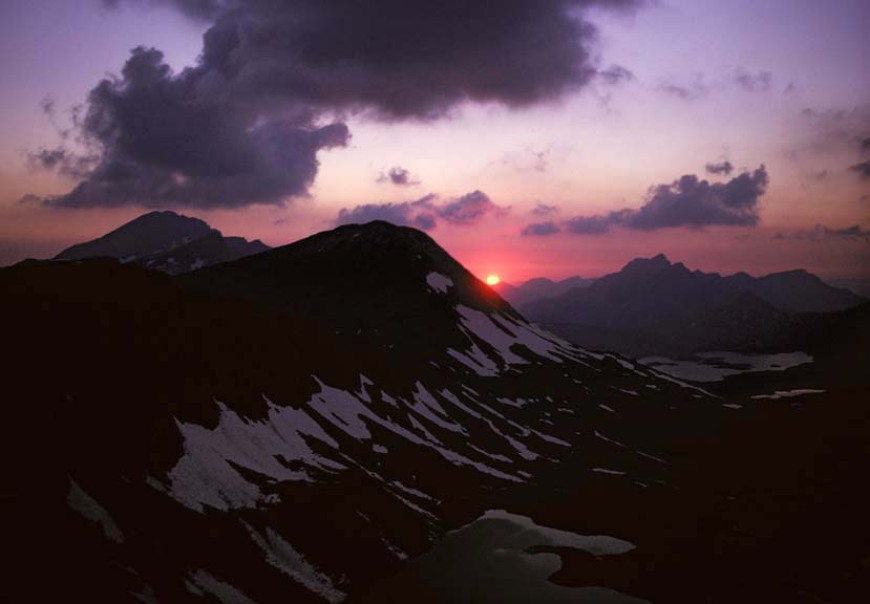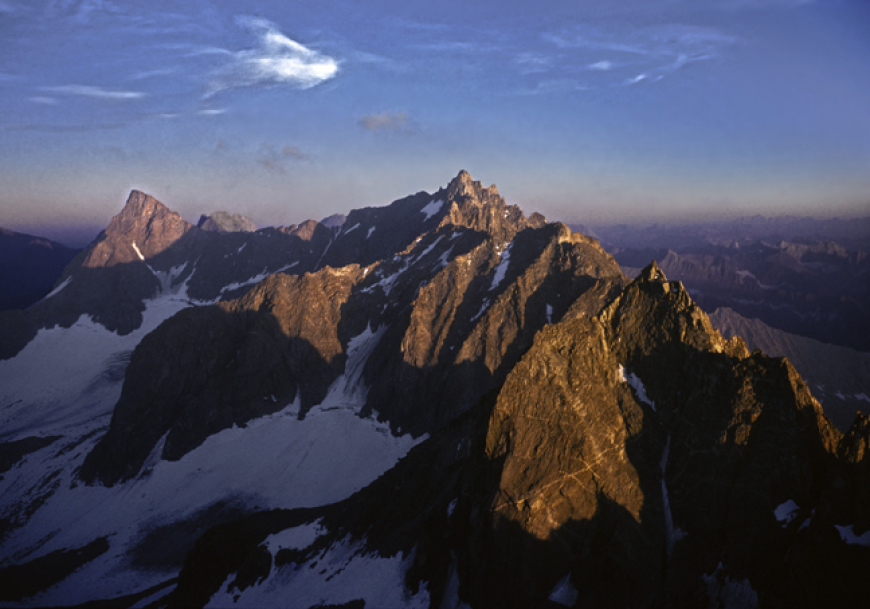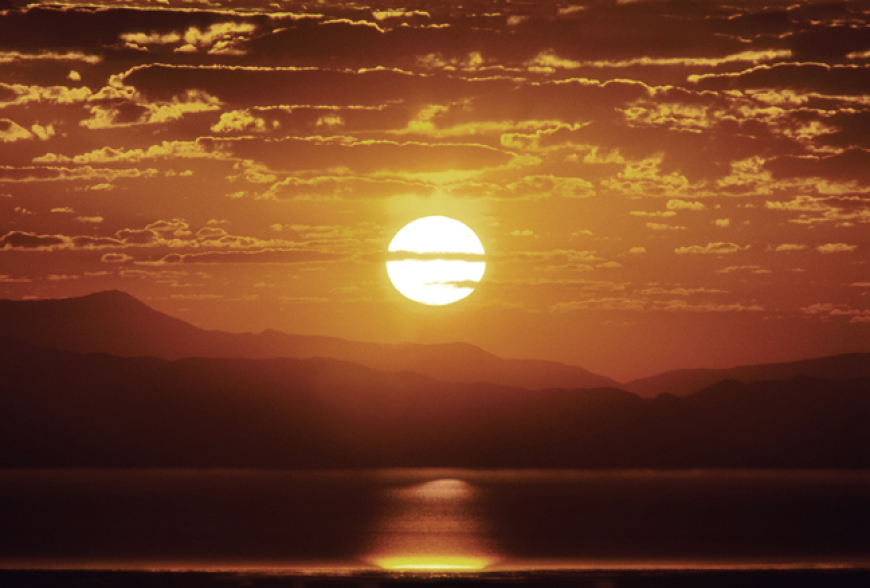
Three Vignettes ( Chapter 10 of Cabeza)
THREE VIGNETTES
NOTHING TO DO BUT HEAD UP
It was the summer of ’73. The day before I’d made the long trek down to the desert in Owens Valley to retrieve a buried food cache. Now back high in the Sierras, after following the John Muir
Trail for a few hours, I branched off the beaten track, as is my preference, across high and open country. Later in the day a strong gusty wind came up and dark clouds menaced, so I decided to make
camp on the only spot available: a slightly tilted, sort-of-flat rock. After a mighty struggle with the wind-whipped tent, tying it down to small boulders, finally I was done. But just as I settled
in with a hot cup of tea to relax and enjoy the storm . . . darn it all . . . the wind died, the clouds dispersed, and the sun came out!
With an easy peak beckoning to the east and a full moon on the way, there was nothing to do but put my boots back on . . . and head up. Two-thirds up I looked back and beheld . . . the few
remaining clouds drifting across an immeasurably vast space . . . the windswept surface of the lakes far below . . . and a ruby sun nestling gently into a notch in the distant peaks . . . and took a
photograph . . . of the Whole thing. On the summit, with hardly a breath of wind, I sat for a few hours . . . surrounded by mountains, lakes, and an infinite array of stars . . . waiting for the moon
to rise high enough to guide me down.
I didn’t need my flashlight.
QUITE SUFFICIENTLY GRAND
It was something of a scramble (meaning I had to use my hands a bit, but nothing especially dangerous; I’ve never used ropes, other than a cord to lower my pack over short sections) up Mount
Agassiz. Though a few hundred feet lower than its spectacular 14,000-foot neighbor North Palisade, the view was still quite sufficiently grand for this, my last night. On top I had the whole Universe
to myself, but previous guests had thoughtfully rearranged the summit rocks, making a fine, if somewhat curved, nook for my sleeping bag. Of course if a thunderstorm had come up I’d have been in big
trouble. Many years later Anne and I spent a long, cold, wet, sleepless night one hundred feet down (hopefully to avoid lightning) from the summit of a Wyoming mountain, no room for a tent, as
thunderstorm after thunderstorm rolled through. I had convinced my spouse that the afternoon’s threatening clouds would disperse at dusk like the previous night. I was half right: it did clear off .
. . finally . . . at dawn.
But here in the Sierras I could see forever . . . and ever . . . and there was no hint of threat.
In the morning, after the climbing sun ever so slowly lit up peak . . . after peak . . . after peak . . . I started down, to the desert far,
far, far below . . . and home.
This photo is of the sun but it reminds me of this vignette, which can also be considered a metaphor of sorts for the human condition:
THE FLAMING GORGE
I was driving south, from Wyoming into Utah, along the western rim of the aptly named Flaming Gorge. To my right the red ball of the sun was sinking into the horizon, lending its hues to the
rocky canyon on my left. A calm was settling over the landscape . . . and my mind. Then I noticed something strange. On the hills behind the eastern rim, perhaps twenty miles away and silhouetted by
a distant cloudbank, was what seemed to be a spot of flame.
I glanced back at the fortunately deserted road, then looked again and now the flames were leaping high above the ridge. What in the world? A huge forest fire? There were oil and gas wells in
the area: had a pipeline exploded? But there was no smoke. I looked to the road, then back, and again the flames had changed, now spreading sideways along the rim. I’d never seen anything like it.
What could it be? A nuclear attack?! An alien invasion??!! With real concern I pulled off the road and reached for my binoculars . . . but before I could raise them to my eyes the far-off clouds
parted . . .
Revealing the now-complete form . . .
Of the utterly perfect . . .
Flaming red . . .
Full moon.


